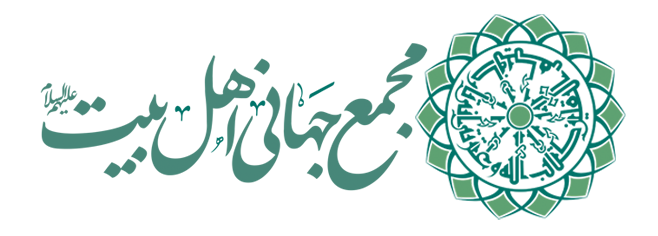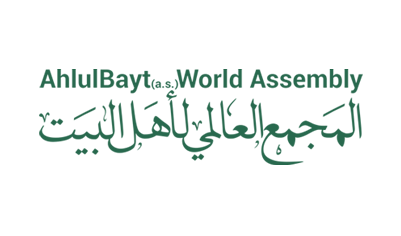Caucasus region, history, and religious identity
The (Southern) Caucasus region, consisting of the Christian countries of Armenia and Georgia, the Muslim country of Azerbaijan, and regions such as the Republic of Artsakh, Nakhchivan, Adjara, Abkhazia, and South Ossetia, due to its location between the Middle East and the West, is of sensitive geographical and civilizational, and geostrategic position.
ABWA Official Website – The Caucasus region, having a cultural-civilizational history of several thousand years, is considered a conjunction point, and simultaneously a border between the Islamic-Eastern culture and the Western-Christian (Orthodox) culture, and it has always been under the spotlight of the regional and extra-regional powers.
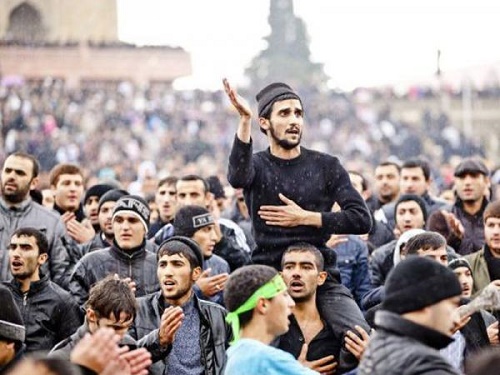
In the Caucasus region, the Republic of Azerbaijan is of special importance, both in terms of geopolitical position and geographical location, and this position is unique and unchangeable.
Why the Caucasus Region is important?
A) The link between the continents of Europe and Asia:
The Caucasus connects the Europe and Asia continents both from the North-South and from the East-West point of view.
B) North-South and East-West Connection Bridge:
Since ancient times, the Caucasus has played a central role in completing the Silk Road and has always been considered one of the most important transit routes between East and West.
C) The place where great and ancient civilizations meet:
The Caucasus region has been the meeting place of great civilizations such as Iran, Greece, China, Ottoman, Russian and European since long ago.
D) Global neighborhood of Islam and Christianity:
The Caucasus is connected to the Islamic lands from the east, south, and southwest, and to the Christian lands from the west and north. In addition, within the South Caucasus, Azerbaijan is Muslim while Armenia and Georgia are Christian. The coexistence of these two divine religions in this region is very important in creating more ties between nations.
E) One of the oil and natural gas transit routes to Europe:
The Baku-Batumi oil pipeline, with a length of 867 kilometers, is the first oil pipeline from the Caspian Sea to the Black Sea coast. In addition, the South Caucasus gas pipeline (Karabakh-Tbilisi-Yerevan) supplies the natural gas needed in the region.
The religious identity of the Caucasus region
Historical documents and evidence clearly indicate that before the advent of Islam, most of the people of the Caucasus, like other people of Iran, were followers of Zoroastrianism and some were Christians. Christianity is a solid pillar of Armenian and Georgian ethnic identity, and its history between these two nations goes back to the 4th century AD.
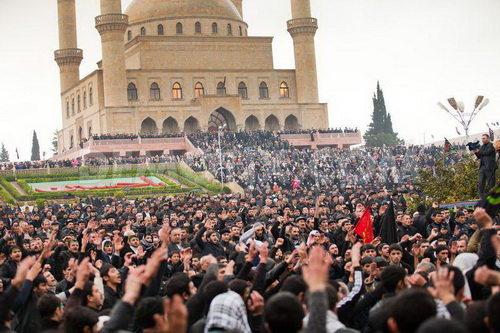
In the 7th and 8th centuries AD, the Caucasus was conquered by Muslims and Islam spread in many parts of it. Until the establishment of the Safavid dynasty the Muslims of the Caucasus were mostly Sunni, and after that, that is, in the 10th century AH (during the reign of Shah Ismail Safavid), they were converted to Shiite by following the Iranians.
After the domination of the Russian Empire over the Muslim regions of Central Asia, the banks of the Volga River, the Caucasus, and the North of the Black Sea, the issue of uniting the Muslims of those lands to confront the domination of Russia became a social necessity. Therefore, in 1905, in the Third Congress of Russian Muslims, to unify the Islamic world, the Twelver Shiite school was officially recognized along with 4 Sunni schools, Hanafi, Maliki, Shafi’i, and Hanbali.
After the collapse of the Soviet communist system in the late 1980s, a wave of return to religion began in the Caucasus region, and religious people found more freedom to do their religious affairs. During this time, the prosecution and investigation of people for their religious beliefs became very rare, and they were able to go to mosques without fear and based on their deep-rooted religious conscience and heart’s desire, to meet their spiritual and religious needs, and to show their adherence to religion more clearly. These visits to the mosques made the people more familiar with the religious rituals and step by step closer to that great desire, which is to be a true Muslim.
It is worth mentioning that in the midst of this huge religious trend in the Caucasus region, the missionaries of the radical Wahhabi, Salafi, and Takfiri movements were also very active and spread their ideas in the countries of the region and to some extent succeeded in establishing bases for themselves. Unfortunately, the fanatical beliefs of these groups portrayed a harsh face of religion and caused severe discords in the region.
Efforts to distort and change the religious identity of the Caucasus!
The efforts to distort and change the religious identity of the Caucasus date back at least a hundred years ago when European-Jewish efforts aimed at creating a rift within the Ottoman Empire formed pan-Turkic circles and a new state called Turkey was established, and to confront it, the Soviet government also founded Pan-Azerism to expand its sphere of influence in the region.
After the collapse of the Soviet Union and the establishment of a new political entity in the region called the Republic of Azerbaijan with a Western-oriented and anti-religious government, the issue of Pan-Azerism was also managed by the West, and thus Pan-Turkism and Pan-Azerism were aligned.
There is consensus on the fact that the Caucasus has a historical, authentic, and ancient identity and culture. This identity has reached a certain stage during the stages of historical growth and prosperity; the stage in which the Caucasus is presented as the origin of the Shiite national unity government and the center of Shiite movements. That is, in a stage of its identity flourishing, the Caucasus region has found an Ashura, AhlulBayt, Shiite, and Islamic identity, and this identity is in clear conflict with anti-Islamic ideas such as Pan-Turkism and Pan-Azerism.
In any case, in terms of identity, the Caucasus has always been against non-religious thoughts and ideas and colonial schools such as Pan-Turkism and Pan-Azerism, etc. That is, as long as the Caucasus is alive with its original Islamic historical identity, it can’t accept the control and dominance of the innovative, fabricated, and colonial identity of ethnocentrism.
During the last twenty years, we have seen extensive efforts to change and distort the Shiite and Islamic identity of the Caucasus. These efforts are dozens of times more intense than the efforts that were made during the eighty years of communist rule over the region.
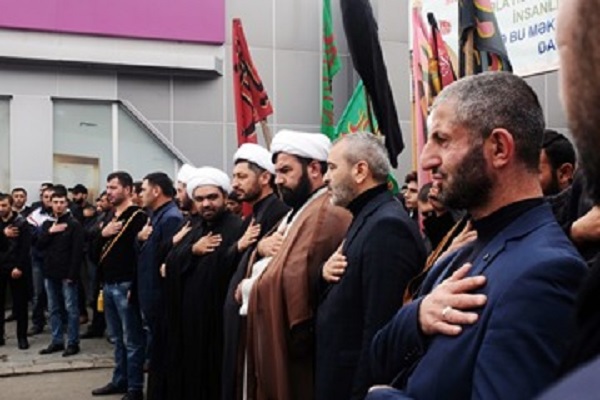
Some of these efforts include networking outside and inside the region, publishing magazines inside and outside the region, setting up television networks abroad and infiltrating or influencing internal networks, holding camps and urban and mountain gatherings, publishing local magazines, and setting up websites and social networks en masse.
Today, we can clearly see the hostility of ethnocentrism, pan-Turkism, and pan-Azeris in the actions of the governments of Baku and Ankara. The government of Baku has banned any kind of mourning for Imam Hussain (a.s.) in public. It is also forbidden to install flags related to Ashura and the mourning for Imam Hussain (a.s.). It is also forbidden to hold Friday prayers, teach Quran in schools, wear hijab, and many other religious prohibitions. What is the reason for this level of enmity of the Baku government with Imam Hussain (a.s.)?
The role of the Ankara government in killing Shiites in Iraq and Syria, as well as supporting the most extreme Takfiri groups, such as ISIL, is not hidden from anyone.
There is no doubt that the movement that decided to distort and change the identity of the Caucasus operates from outside. For years, the United States and the Zionist regime have been emphasizing the need for division and ethnic demarcation in the Middle East, the Caucasus, and especially in Iran. In this regard, they have presented theories that their implementation process can be seen in the form of bloody wars and terrorist and separatist movements in Iraq, Afghanistan, Syria, etc.
The progeny of Imams and Sadat in the Caucasus
One of the important factors in the promotion and propagation of Islamic teachings in the lands conquered by Muslims, especially Iran, has been the migration and presence of Imamzadegan (sons of imams) and Alavi Sadat, which has not been paid much attention and requires a lot of research and study. Imamzadegan and Sadat, who were actually carriers of the message of the Quran and AhlulBayt (a.s.) and the symbol of pure Muhammadan Islam (p.b.u.h), in addition to different regions of Iran, were also present in the Caucasus, and many of their names are found in genealogy books.
Some of these figures are:
Hussein son of Ali bin Muhammad son of Ali son of Ismail son of Imam Jafar Sadeq (a.s.), who lived in Tbilisi in the 3rd century AH, and was martyred there by the Saffarids.
Abu Ismail Ebrahim son of Nasser son of Tabataba in his famous book “Al-Muntaqela Al-Talibiyah” mentioned the names of a group of children of Imam Hussain (a.s.) and Hazrat Abbas (a.s.) who arrived in the city of Barda (then the center of the Eastern Caucasus) and resided there. These dignitaries are the children of Hassan son of Ali son of Ali son of Hussain son of Ali bin son of Abi Talib (a.s.) and the children of Umar son of Hasan Aftas son of Ali son of Ali son of Hossein son of Ali son of Abi Talib (a.s.), and Hamza bin Hasan bin Ubaidullah bin Abbas bin Ali bin Abi Talib (a.s.).
Fatimah Sughra, known as Bibi Heybat or Hakimeh Khatoon, is one of the children of Imam Musa Kazem (a.s.) whose shrine is located at the entrance of Baku city (Sheikh Lar region) and has attracted the special attention of the people of the region since the 3rd century AH. She has been mentioned in many sources and in different historical periods, especially during the Safavid dynasty, special attention was paid to the restoration and maintenance of her mausoleum.
Imam Musa Kazem (a.s.) named four of his daughters Fatimah:
Fatimah Kubra, who is Lady Fatimah Masoumeh (a.s.), whose shrine is in the holy city of Qom; Fatimah Sughra, known as Bibi Heybat or Hakimeh Khatoon, who is buried at the entrance of Baku city. Fatemeh Wusta (middle) is buried in Isfahan and Fatimah Ukhra (the last) is buried in Rasht.
In addition to the mentioned cases, there are shrines of Imamzadegan and Sadat in various regions of the Caucasus, such as Imamzadeh Ibrahim in Ganja city, Bibi Rahima (Rahima Khatun) in Nardaran region, and Imamzadeh in Shamakhi city, etc. Also, there are many Sadat in the Caucasus, and they have played an important cultural role in spreading and perpetuating religious beliefs, especially during the reign of communist atheists.
The Republic of Azerbaijan, the most important country in the Caucasus region
The Republic of Azerbaijan, which is known as the largest country in the South Caucasus region and the second Shiite country in the world, has an area of 86,600 km² and a population of about 10 million people (10.14 million in 2021). 95% of the population of this republic are Muslims, and of this number, 95% are Shiite and the rest 5% are Sunni.
Despite the large population of Muslims in the Republic of Azerbaijan, it can be considered the most anti-Islamic Muslim country in the world! The government of Azerbaijan not only does not take any practical measures to deepen Islamic and Shiite identity and beliefs but also seeks to dominate and give identity to secularism in the governance structure and culture of the country! This is considered the most significant challenge and confrontation between the Shiites and the government of Ilham Aliyev, the president of Azerbaijan.
In general, anti-Islamism in the Caucasus roots back to the former Soviet Bolsheviks in dealing with religion with the slogan “Religion is the opium of the people”. But after the collapse of the Soviet Union, independent Azerbaijan also took the same path as before. Even now, Ilham Aliyev, the current president, and his family play an essential role in confronting the religious culture in this country and promoting Western culture, which has also earned the admiration of the Zionists!
After the victory of the Islamic Revolution in Iran and the appearance of its effects in the world, the colonial governments, and their affiliates, who were afraid of the influence of the Islamic Revolution and its ruling thought, instead of answering the question and paying attention to the local culture, religious rituals, and Islamic awakening tried to erase the question itself, that is, Islam! The mentioned method, which today’s version is strictly followed by the government in Baku, and the Baku statesmen apply to prevent the positive effects of the Islamic revolution on their nation and the Islamic awakening in that country is that firstly, they have launched a strong anti-Iranian policy and atmosphere in the country, and secondly, they impose severe restrictions on the religious people of Azerbaijan. Interestingly, this same government not only does not confront the activities of deviant sects and other religions in its land, but Jews and Christians freely engage in their religious activities with the support of the government, and deviant sects, such as Wahhabism, Jehovah’s Witnesses, etc., expand their activities in the cities of this country.
In addition to the Azerbaijan government’s fear of Islam, and the increase in the daily activities of deviant sects in this country, another factor is the influence of the West in this country and the forcing of Azeri statesmen by the Western governments, especially the United States and the Zionist regime, to putting pressure on the Muslims of Azerbaijan. In fact, the more the presence of Westerners and Zionists in Azerbaijan has increased, the more the pressure on the Muslims of this land has increased. /345/
The (Southern) Caucasus region, consisting of the Christian countries of Armenia and Georgia, the Muslim country of Azerbaijan, and regions such as the Republic of Artsakh, Nakhchivan, Adjara, Abkhazia, and South Ossetia, due to its location between the Middle East and the West, is of sensitive geographical and civilizational, and geostrategic position.
ABWA Official Website – The Caucasus region, having a cultural-civilizational history of several thousand years, is considered a conjunction point, and simultaneously a border between the Islamic-Eastern culture and the Western-Christian (Orthodox) culture, and it has always been under the spotlight of the regional and extra-regional powers.

In the Caucasus region, the Republic of Azerbaijan is of special importance, both in terms of geopolitical position and geographical location, and this position is unique and unchangeable.
Why the Caucasus Region is important?
A) The link between the continents of Europe and Asia:
The Caucasus connects the Europe and Asia continents both from the North-South and from the East-West point of view.
B) North-South and East-West Connection Bridge:
Since ancient times, the Caucasus has played a central role in completing the Silk Road and has always been considered one of the most important transit routes between East and West.
C) The place where great and ancient civilizations meet:
The Caucasus region has been the meeting place of great civilizations such as Iran, Greece, China, Ottoman, Russian and European since long ago.
D) Global neighborhood of Islam and Christianity:
The Caucasus is connected to the Islamic lands from the east, south, and southwest, and to the Christian lands from the west and north. In addition, within the South Caucasus, Azerbaijan is Muslim while Armenia and Georgia are Christian. The coexistence of these two divine religions in this region is very important in creating more ties between nations.
E) One of the oil and natural gas transit routes to Europe:
The Baku-Batumi oil pipeline, with a length of 867 kilometers, is the first oil pipeline from the Caspian Sea to the Black Sea coast. In addition, the South Caucasus gas pipeline (Karabakh-Tbilisi-Yerevan) supplies the natural gas needed in the region.
The religious identity of the Caucasus region
Historical documents and evidence clearly indicate that before the advent of Islam, most of the people of the Caucasus, like other people of Iran, were followers of Zoroastrianism and some were Christians. Christianity is a solid pillar of Armenian and Georgian ethnic identity, and its history between these two nations goes back to the 4th century AD.

In the 7th and 8th centuries AD, the Caucasus was conquered by Muslims and Islam spread in many parts of it. Until the establishment of the Safavid dynasty the Muslims of the Caucasus were mostly Sunni, and after that, that is, in the 10th century AH (during the reign of Shah Ismail Safavid), they were converted to Shiite by following the Iranians.
After the domination of the Russian Empire over the Muslim regions of Central Asia, the banks of the Volga River, the Caucasus, and the North of the Black Sea, the issue of uniting the Muslims of those lands to confront the domination of Russia became a social necessity. Therefore, in 1905, in the Third Congress of Russian Muslims, to unify the Islamic world, the Twelver Shiite school was officially recognized along with 4 Sunni schools, Hanafi, Maliki, Shafi’i, and Hanbali.
After the collapse of the Soviet communist system in the late 1980s, a wave of return to religion began in the Caucasus region, and religious people found more freedom to do their religious affairs. During this time, the prosecution and investigation of people for their religious beliefs became very rare, and they were able to go to mosques without fear and based on their deep-rooted religious conscience and heart’s desire, to meet their spiritual and religious needs, and to show their adherence to religion more clearly. These visits to the mosques made the people more familiar with the religious rituals and step by step closer to that great desire, which is to be a true Muslim.
It is worth mentioning that in the midst of this huge religious trend in the Caucasus region, the missionaries of the radical Wahhabi, Salafi, and Takfiri movements were also very active and spread their ideas in the countries of the region and to some extent succeeded in establishing bases for themselves. Unfortunately, the fanatical beliefs of these groups portrayed a harsh face of religion and caused severe discords in the region.
Efforts to distort and change the religious identity of the Caucasus!
The efforts to distort and change the religious identity of the Caucasus date back at least a hundred years ago when European-Jewish efforts aimed at creating a rift within the Ottoman Empire formed pan-Turkic circles and a new state called Turkey was established, and to confront it, the Soviet government also founded Pan-Azerism to expand its sphere of influence in the region.
After the collapse of the Soviet Union and the establishment of a new political entity in the region called the Republic of Azerbaijan with a Western-oriented and anti-religious government, the issue of Pan-Azerism was also managed by the West, and thus Pan-Turkism and Pan-Azerism were aligned.
There is consensus on the fact that the Caucasus has a historical, authentic, and ancient identity and culture. This identity has reached a certain stage during the stages of historical growth and prosperity; the stage in which the Caucasus is presented as the origin of the Shiite national unity government and the center of Shiite movements. That is, in a stage of its identity flourishing, the Caucasus region has found an Ashura, AhlulBayt, Shiite, and Islamic identity, and this identity is in clear conflict with anti-Islamic ideas such as Pan-Turkism and Pan-Azerism.
In any case, in terms of identity, the Caucasus has always been against non-religious thoughts and ideas and colonial schools such as Pan-Turkism and Pan-Azerism, etc. That is, as long as the Caucasus is alive with its original Islamic historical identity, it can’t accept the control and dominance of the innovative, fabricated, and colonial identity of ethnocentrism.
During the last twenty years, we have seen extensive efforts to change and distort the Shiite and Islamic identity of the Caucasus. These efforts are dozens of times more intense than the efforts that were made during the eighty years of communist rule over the region.

Some of these efforts include networking outside and inside the region, publishing magazines inside and outside the region, setting up television networks abroad and infiltrating or influencing internal networks, holding camps and urban and mountain gatherings, publishing local magazines, and setting up websites and social networks en masse.
Today, we can clearly see the hostility of ethnocentrism, pan-Turkism, and pan-Azeris in the actions of the governments of Baku and Ankara. The government of Baku has banned any kind of mourning for Imam Hussain (a.s.) in public. It is also forbidden to install flags related to Ashura and the mourning for Imam Hussain (a.s.). It is also forbidden to hold Friday prayers, teach Quran in schools, wear hijab, and many other religious prohibitions. What is the reason for this level of enmity of the Baku government with Imam Hussain (a.s.)?
The role of the Ankara government in killing Shiites in Iraq and Syria, as well as supporting the most extreme Takfiri groups, such as ISIL, is not hidden from anyone.
There is no doubt that the movement that decided to distort and change the identity of the Caucasus operates from outside. For years, the United States and the Zionist regime have been emphasizing the need for division and ethnic demarcation in the Middle East, the Caucasus, and especially in Iran. In this regard, they have presented theories that their implementation process can be seen in the form of bloody wars and terrorist and separatist movements in Iraq, Afghanistan, Syria, etc.
The progeny of Imams and Sadat in the Caucasus
One of the important factors in the promotion and propagation of Islamic teachings in the lands conquered by Muslims, especially Iran, has been the migration and presence of Imamzadegan (sons of imams) and Alavi Sadat, which has not been paid much attention and requires a lot of research and study. Imamzadegan and Sadat, who were actually carriers of the message of the Quran and AhlulBayt (a.s.) and the symbol of pure Muhammadan Islam (p.b.u.h), in addition to different regions of Iran, were also present in the Caucasus, and many of their names are found in genealogy books.
Some of these figures are:
Hussein son of Ali bin Muhammad son of Ali son of Ismail son of Imam Jafar Sadeq (a.s.), who lived in Tbilisi in the 3rd century AH, and was martyred there by the Saffarids.
Abu Ismail Ebrahim son of Nasser son of Tabataba in his famous book “Al-Muntaqela Al-Talibiyah” mentioned the names of a group of children of Imam Hussain (a.s.) and Hazrat Abbas (a.s.) who arrived in the city of Barda (then the center of the Eastern Caucasus) and resided there. These dignitaries are the children of Hassan son of Ali son of Ali son of Hussain son of Ali bin son of Abi Talib (a.s.) and the children of Umar son of Hasan Aftas son of Ali son of Ali son of Hossein son of Ali son of Abi Talib (a.s.), and Hamza bin Hasan bin Ubaidullah bin Abbas bin Ali bin Abi Talib (a.s.).
Fatimah Sughra, known as Bibi Heybat or Hakimeh Khatoon, is one of the children of Imam Musa Kazem (a.s.) whose shrine is located at the entrance of Baku city (Sheikh Lar region) and has attracted the special attention of the people of the region since the 3rd century AH. She has been mentioned in many sources and in different historical periods, especially during the Safavid dynasty, special attention was paid to the restoration and maintenance of her mausoleum.
Imam Musa Kazem (a.s.) named four of his daughters Fatimah:
Fatimah Kubra, who is Lady Fatimah Masoumeh (a.s.), whose shrine is in the holy city of Qom; Fatimah Sughra, known as Bibi Heybat or Hakimeh Khatoon, who is buried at the entrance of Baku city. Fatemeh Wusta (middle) is buried in Isfahan and Fatimah Ukhra (the last) is buried in Rasht.
In addition to the mentioned cases, there are shrines of Imamzadegan and Sadat in various regions of the Caucasus, such as Imamzadeh Ibrahim in Ganja city, Bibi Rahima (Rahima Khatun) in Nardaran region, and Imamzadeh in Shamakhi city, etc. Also, there are many Sadat in the Caucasus, and they have played an important cultural role in spreading and perpetuating religious beliefs, especially during the reign of communist atheists.
The Republic of Azerbaijan, the most important country in the Caucasus region
The Republic of Azerbaijan, which is known as the largest country in the South Caucasus region and the second Shiite country in the world, has an area of 86,600 km² and a population of about 10 million people (10.14 million in 2021). 95% of the population of this republic are Muslims, and of this number, 95% are Shiite and the rest 5% are Sunni.
Despite the large population of Muslims in the Republic of Azerbaijan, it can be considered the most anti-Islamic Muslim country in the world! The government of Azerbaijan not only does not take any practical measures to deepen Islamic and Shiite identity and beliefs but also seeks to dominate and give identity to secularism in the governance structure and culture of the country! This is considered the most significant challenge and confrontation between the Shiites and the government of Ilham Aliyev, the president of Azerbaijan.
In general, anti-Islamism in the Caucasus roots back to the former Soviet Bolsheviks in dealing with religion with the slogan “Religion is the opium of the people”. But after the collapse of the Soviet Union, independent Azerbaijan also took the same path as before. Even now, Ilham Aliyev, the current president, and his family play an essential role in confronting the religious culture in this country and promoting Western culture, which has also earned the admiration of the Zionists!
After the victory of the Islamic Revolution in Iran and the appearance of its effects in the world, the colonial governments, and their affiliates, who were afraid of the influence of the Islamic Revolution and its ruling thought, instead of answering the question and paying attention to the local culture, religious rituals, and Islamic awakening tried to erase the question itself, that is, Islam! The mentioned method, which today’s version is strictly followed by the government in Baku, and the Baku statesmen apply to prevent the positive effects of the Islamic revolution on their nation and the Islamic awakening in that country is that firstly, they have launched a strong anti-Iranian policy and atmosphere in the country, and secondly, they impose severe restrictions on the religious people of Azerbaijan. Interestingly, this same government not only does not confront the activities of deviant sects and other religions in its land, but Jews and Christians freely engage in their religious activities with the support of the government, and deviant sects, such as Wahhabism, Jehovah’s Witnesses, etc., expand their activities in the cities of this country.
In addition to the Azerbaijan government’s fear of Islam, and the increase in the daily activities of deviant sects in this country, another factor is the influence of the West in this country and the forcing of Azeri statesmen by the Western governments, especially the United States and the Zionist regime, to putting pressure on the Muslims of Azerbaijan. In fact, the more the presence of Westerners and Zionists in Azerbaijan has increased, the more the pressure on the Muslims of this land has increased. /345/
